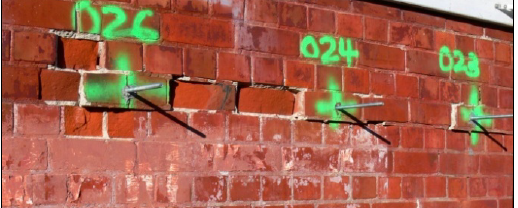1 Research Fellow, Dept. of Civil and Environmental Engineering, The University of Auckland, Auckland, New Zealand, ddiz001@aucklanduni.ac.nz
2 Professor, Dept. of Civil Engineering, The University of Minnesota, Minneapolis, United States of America, schul088@umn.edu
3 Professor, Dept. of Civil and Environmental Engineering, The University of Auckland, Auckland, New Zealand, j.ingham@auckland.ac.nz
ABSTRACT
The connections between walls of unreinforced masonry (URM) buildings and flexible timber diaphragms are critical building components that must perform adequately before desirable earthquake response of URM buildings may be achieved. Field observations made during the initial reconnaissance and the subsequent damage surveys of clay brick URM buildings following the 2010/2011 Canterbury, New Zealand earthquakes revealed numerous cases where anchor connections joining masonry walls or parapets with roof or floor diaphragms appeared to have failed prematurely. These observations were more frequent for the case of adhesive anchor connections than for the case of through-bolt connections (i.e. anchorages having plates on the exterior façade of the masonry walls). Subsequently, an in-field test program was undertaken in an attempt to evaluate the performance of adhesive anchor connections between unreinforced clay brick URM walls and roof or floor diaphragm. The study consisted of a total of almost 400 anchor tests conducted in eleven existing URM buildings located in Christchurch, Whanganui and Auckland. Specific objectives of the study included the identification of failure modes of adhesive anchors in existing URM walls and the influence of the following variables on anchor load-displacement response: adhesive type, strength of the masonry materials (brick and mortar), anchor embedment depth, anchor rod diameter, overburden level, anchor rod type, quality of installation and the use of metal foil sleeve. In addition, the comparative performance of bent anchors (installed at an angle of minimum 22.5o to the perpendicular projection from the wall surface) and anchors positioned horizontally was investigated. Observations on the performance of wall-to-diaphragm connections in the 2010/2011 Canterbury earthquakes and a snapshot of the performed experimental program and the test results are presented herein.
KEYWORDS: Diaphragm to wall connection, adhesive anchors, pull-out test, URM
515.pdf



